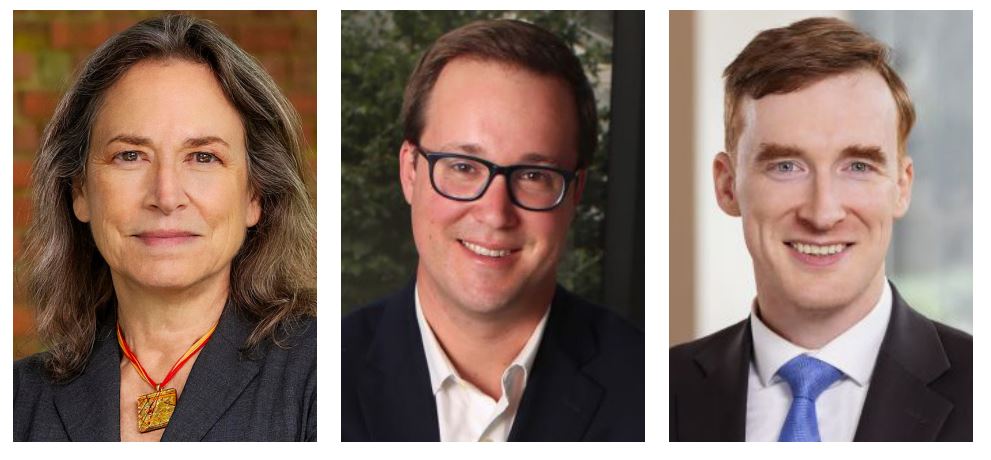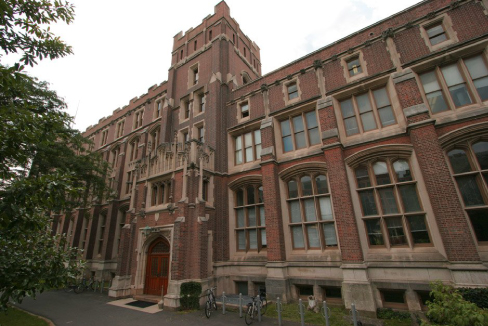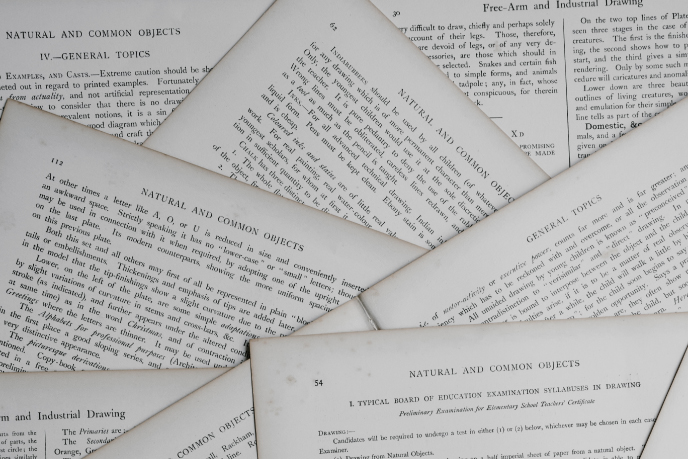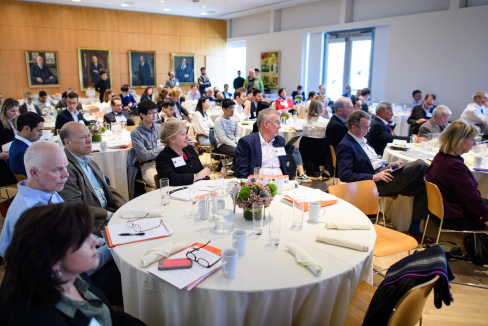The Carbon Mitigation Initiative (CMI), administered by the High Meadows Environmental Institute (HMEI) at Princeton University, is a 24-year-old partnership with bp. CMI currently funds 21 principal investigators (PIs) and over 60 researchers and students. Teams of scientists, engineers, and policy experts are working across multiple disciplines to develop solutions to the world’s biggest climate, carbon and biodiversity problems and to mitigate their impacts on societies around the globe. In this report, each of the PIs has selected one feature of their research from 2023 to highlight, summarize and provide context for their work. The research highlights are followed by a complete list of the year’s peer-reviewed publications.
Ongoing Research Activities
The Inflation Reduction Act of 2022 is projected to fundamentally change carbon emissions of the United States. Princeton’s Net-Zero America project provided substantial input into this legislation and the CMI continues to invest in activities that follow from the initial work. Jesse Jenkins’ ZERO lab is developing a model called MACRO that would help governments around the world plan cost effective transitions to net-zero. The Greig group is focused on real-world barriers to carbon mitigation projects, including availability of development capital, community support, the need to train a new workforce and logistical constraints on deployment.
In 2023, CMI continued to explore options for new mitigation technologies. Researchers are looking for efficient and economical ways to produce and use hydrogen as a fossil fuel replacement, with ammonia being a major contender for its transport. In PNAS, CMI researchers, including members of the Porporato, Carter, Mueller and Zondlo groups, analyzed emissions from an ammonia economy. Eric Larson’s group examined the potential for forest-based bioenergy projects in the southern United States. Claire White and her group focused on alternative cements that reduce emissions without sacrificing long-term performance.
CMI’s Natural Climate Solutions (NCS) program investigates how land use can impact biodiversity and mitigate or offset carbon emissions. The partnership with University of California Santa Barbara’s Environmental Market Solutions Lab (emLab) and the Environmental Defense Fund (EDF) explores, through a series of econometric analyses, how changes in land use respond to market incentives in different countries around the globe. The researchers, including principal investigators Kathy Baylis, Robert Heilmayr, and Andrew Plantinga, looked at how deforestation has responded in the past to changes in crop prices. Robert Pringle’s group analyzed how large herbivores in the African savannas impact carbon stocks in that region, along with environmental and land-use changes. Jonathan Levine and members of his lab developed high-resolution maps of 19 different landbased strategies for mitigating climate change. These maps show locations where such strategies can best help balance the global carbon budget. The Zhang group identified the influence of environmental and soil conditions that predict methane emissions from wetlands.
CMI’s 2023 research also examined how oceans and terrestrial vegetation interact with anthropogenic carbon in the atmosphere. This is important because terrestrial and oceanic carbon sinks are primary determinants of humanity’s remaining budget for fossil fuel emissions. Laure Resplandy’s work explored how oceans respond to decreased oxygen associated with climate change. The Pacala group worked on developing the first models that predict both the maintenance of biodiversity that affects carbon and hydrologic cycling and the impact of this biodiversity on climate. At GFDL, the Shevliakova group focused on improving Earth System Models to reduce uncertainty in the prediction and projections of land carbon stocks. The Vecchi lab improved their modeling of tropical cyclones using reconstruction from sedimentary paleohurricane records with the goal of better understanding hurricane activity.
Best Paper Awards 2023
Since 2010, the CMI Best Paper Award for Postdoctoral Fellows has been presented annually to one or two CMI-affiliated postdoctoral research associate(s) or research scholar(s) selected for their contribution to an important CMI paper. In late 2019, CMI created a similar award honoring a CMIaffiliated doctoral student for their contributions to an important CMI paper.
Matteo Bertagni, Postdoctoral Research Associate at HMEI, received the Robert H. Socolow Best Paper Award for Postdoctoral Fellows for his work on the paper “Risk of the hydrogen economy for atmospheric methane,” published in Nature Communications.
The third Robert H. Socolow Best Paper Award for Doctoral Students was given to Wilson Ricks, who is a PhD student in the Jenkins lab. He received the award for his work on the paper “Minimizing emissions from gridbased hydrogen production in the United States,” published in Environmental Research Letters.

Awards and Honors
In 2023, Professor Emily Carter, Gerhard R. Andlinger Professor in Energy and the Environment, Professor of Mechanical and Aerospace Engineering, and Senior Strategic Advisor and Associate Laboratory Director for Applied Materials and Sustainability Sciences at the Princeton Plasma Physics Laboratory, was honored with the William H. Nichols Medal for 2024, a prestigious annual honor bestowed by the American Chemical Society’s (ACS) New York Section for outstanding contributions in chemistry. The Section chose Carter for “groundbreaking quantum insights in sustainable catalysis” (source: https://www.pppl.gov/news/2023/carter-honored-2024-william-h-nichols-medalist).
In 2023, Jesse Jenkins, Assistant Professor of Mechanical and Aerospace Engineering and the Andlinger Center for Energy and the Environment, was awarded Engineering News Record top 25 Newsmakers of 2022 for “predicting and understanding climate-change impacts now and in the future, and in leading efforts to model how solutions might work and how to get them done” (source: https://www.enr.com/articles/55792-jesse-djenkins-princeton-professor-leads-team-modeling-how-2022- law-can-propel-us-action-on-climate-change).
Michael Mueller, Professor of Mechanical and Aerospace Engineering, was elected a Fellow of the American Society of Mechanical Engineers (source: https://mae.princeton.edu/about-mae/news/michael-e-mueller-elected-fellow-american-society-mechanical-engineers).

Gabriel Vecchi, Knox Taylor Professor of Geosciences and HMEI and Director of HMEI, was selected as a 2024 American Meteorological Society Fellow. The AMS recognizes outstanding leaders in the weather, water, and climate communities at their annual meetings. The society’s mission is to advance atmospheric and related sciences, technologies, applications, and services by supporting climate science experts and organizations (source: https://vecchi.princeton.edu/news/prof-gabriel-vecchi-has-been-selected-2024-american-meteorological-society-fellow).
In January 2024, Claire White, Associate Professor of Civil and Environmental Engineering and the Andlinger Center for Energy and the Environment, was awarded $3 million from the U.S. Department of Energy (DOE) to lead the interdisciplinary effort on the decarbonization of concrete. She will lead a consortium of researchers and practitioners from academia on “Inter-grinding of Waste Activators and Low-grade Calcined Kaolin Clay for One-part Alkali-activated Concrete Technology” (source: https://cee.princeton.edu/news/professor-claire-white-has-been-awarded-3000000-january-us-department-energy-doe). White was also one of just four faculty to receive the 2023 President’s Award for Distinguished Teaching at Princeton.




